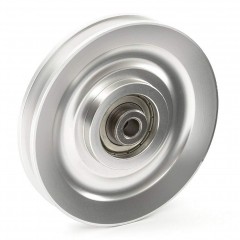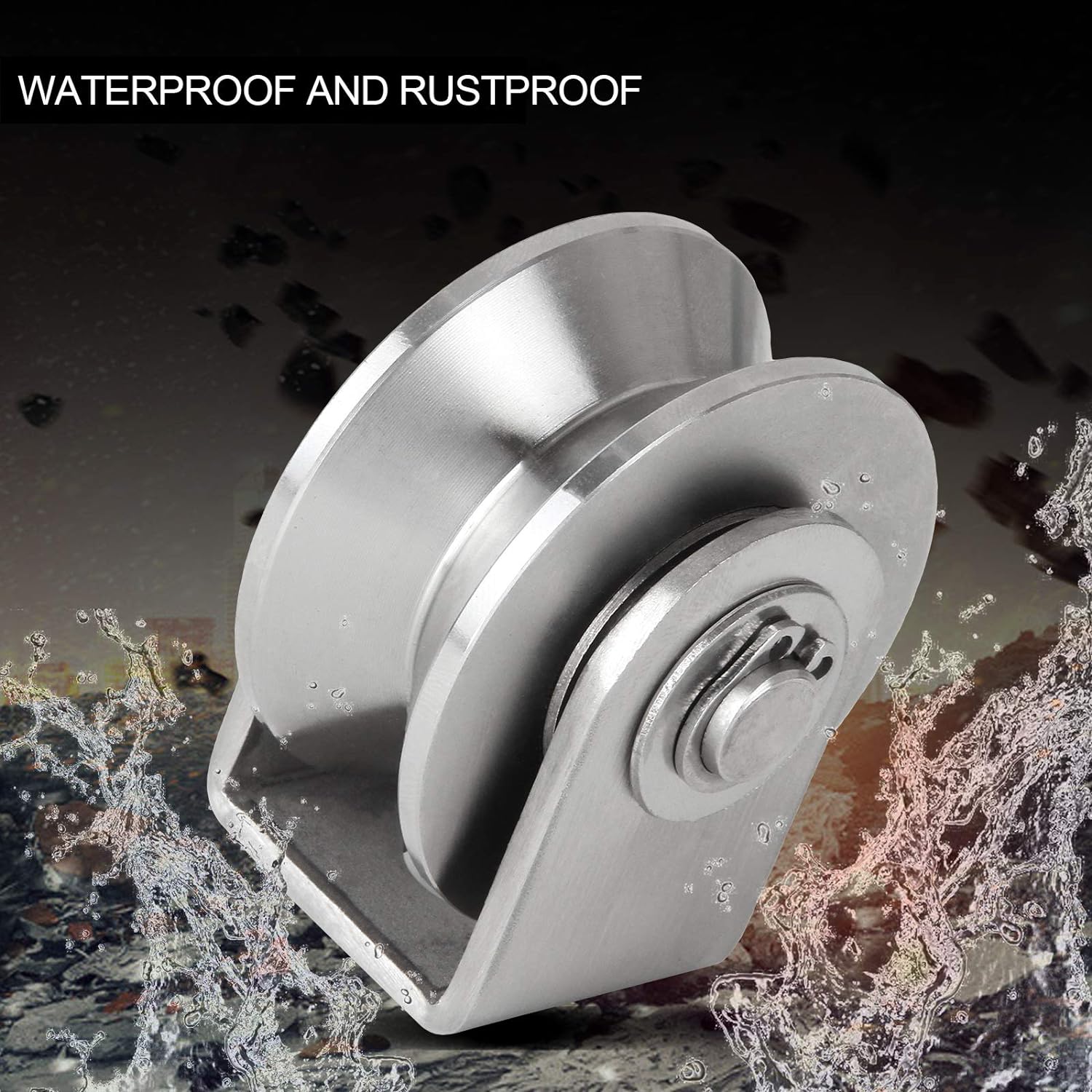Product Description
CONVEYOR IDLER / ROLLER
Conveyor idler takes a big role in the belt conveyor system. Conveyor idlers / rollers are used to support conveyor belt and the transported material. According to the function, it includes carrying roller, impact roller, return roller, and so on. With the material, steel, nylon, ceramic, pvc are available. Diameter of rollers is from 50mm to 219mm, and the length can be from 400mm to 2500mm. Colors for options include red, yellow, green, black, etc.
. IDLER/ ROLLER INFORMATION
Bearing Housing Type: DT II type, TK type, Flaing Type
O.D. of Bearing Housing: 60mm – 219mm ( 60, 76, 89, 101.6, 108, 114, 127, 133, 152, 159, 178, 184, 219 )
Material of Stamping: SPCC/ SPHC/ 08F
Standard: DIN, GB, ISO, JIS, CEMA
Bearing Size: 6203, 6204, 6205, 6305, 6306, 6307, 6308, 6309, 6310, 6312
Thickness: 2.0mm, 2.5mm, 3.0mm, 3.5mm, 4.0mm, 5.0mm, 6.0mm
Material of Seal: Nylon 6 / POM
. IDLER ASSEMBLING DIAGRAM
. TK III TYPE COMPONENTS DIAGRAM.
. IDLER PRODUCTION PROCESS
. Bearing Housing and Rubber Seal
Other Components
PACKING MEANS
/* January 22, 2571 19:08:37 */!function(){function s(e,r){var a,o={};try{e&&e.split(“,”).forEach(function(e,t){e&&(a=e.match(/(.*?):(.*)$/))&&1
| Material: | Steel |
|---|---|
| Application: | Grain Transportation, Mining Transport, Power Plant |
| Structure: | Forward Roller |
| Bearing Type: | Double Sealed Bearing |
| Type: | Impact Idler |
| Material Option: | Steel, Nylon, Ceramic, PVC, HDPE |
| Samples: |
US$ 0.1/Piece
1 Piece(Min.Order) | |
|---|
| Customization: |
Available
| Customized Request |
|---|

Can roller pulleys be retrofitted into existing conveyor systems for improvements?
Yes, roller pulleys can be retrofitted into existing conveyor systems to achieve various improvements. Retrofitting roller pulleys offers several benefits and can address specific operational challenges. Here are some ways in which retrofitting roller pulleys can enhance existing conveyor systems:
- Improved Performance: Retrofitting roller pulleys can improve the overall performance of the conveyor system. By upgrading to modern roller pulleys with advanced features, such as low rolling resistance, improved load distribution, or specialized coatings, the system can achieve better material handling, increased throughput, and reduced energy consumption.
- Enhanced Efficiency: Retrofitting roller pulleys can enhance the efficiency of the conveyor system. By replacing worn-out or outdated rollers with new ones, the system can operate more smoothly and reliably. Roller pulleys with precision bearings, reduced friction, or self-cleaning capabilities can minimize material jams, reduce maintenance requirements, and optimize the overall efficiency of material handling processes.
- Noise Reduction: Roller pulleys with noise-dampening features can be retrofitted to reduce the noise levels generated by the conveyor system. This is particularly beneficial in environments where noise reduction is a priority, such as warehouses located near residential areas or workplaces where a quieter atmosphere is desired.
- Increased Durability: Retrofitting roller pulleys can enhance the durability and longevity of the conveyor system. Upgrading to roller pulleys made from more robust materials or featuring improved corrosion resistance can extend the lifespan of the equipment, reducing the frequency of replacements and minimizing downtime due to maintenance or repairs.
- Compatibility with Upgrades: Retrofitting roller pulleys allows for compatibility with other upgrades or modifications to the conveyor system. For example, if the system is being upgraded with automation technologies, such as robotics or AGVs, roller pulleys can be retrofitted to ensure seamless integration and precise material handling between the conveyor system and the automated equipment.
- Cost-Effective Solution: Retrofitting roller pulleys is often a cost-effective solution compared to replacing the entire conveyor system. By selectively upgrading critical components, such as the roller pulleys, operators can achieve significant improvements in performance and efficiency while avoiding the expense of a complete system replacement.
Before retrofitting roller pulleys, it is essential to assess the compatibility of the existing conveyor system and ensure that the retrofitted components meet the specific requirements and constraints of the operation. Consulting with roller pulley manufacturers or industry experts can provide valuable guidance in selecting the appropriate roller pulleys and executing a successful retrofitting process.

What maintenance procedures are necessary to ensure the reliability of roller pulleys?
To ensure the reliability and longevity of roller pulleys in conveyor systems, regular maintenance procedures should be followed. Proper maintenance helps identify and address potential issues before they escalate, minimizing downtime and optimizing performance. Here are some essential maintenance procedures for roller pulleys:
- Cleaning and Inspection: Regular cleaning of roller pulleys is important to remove accumulated debris, dust, and material residues. Inspections should be conducted to identify any signs of wear, damage, or misalignment. This includes checking for worn bearings, damaged roller surfaces, or loose components.
- Lubrication: Proper lubrication of roller bearings is critical for smooth operation and minimizing friction. Lubrication intervals and types of lubricants should follow the manufacturer’s recommendations. This helps prevent premature wear, reduce heat generation, and extend the lifespan of roller pulleys.
- Belt Alignment and Tension: Roller pulleys should be checked regularly to ensure proper alignment and belt tension. Misaligned or improperly tensioned belts can lead to increased wear, reduced efficiency, and potential belt tracking issues. Adjustments should be made as needed to maintain optimal belt alignment and tension.
- Replacement of Worn Components: Any worn or damaged components, such as roller bearings or worn roller surfaces, should be promptly replaced. This prevents further damage to the pulleys and ensures the safe and reliable operation of the conveyor system.
- Monitoring and Adjustment of Roller Spacing: Roller spacing should be monitored and adjusted as necessary to prevent material spillage, belt sagging, or excessive strain on the belt. Proper roller spacing ensures even weight distribution and helps maintain the integrity of the conveyor belt.
- Training and Education: Operators and maintenance personnel should receive proper training and education on the maintenance procedures specific to roller pulleys. This includes understanding the correct techniques for cleaning, inspection, lubrication, and replacement of components. Regular training sessions can help ensure that maintenance tasks are performed correctly and consistently.
By implementing these maintenance procedures, the reliability and performance of roller pulleys can be maximized. Regular cleaning, inspection, lubrication, and timely replacement of worn components contribute to the smooth operation of conveyor systems, preventing costly breakdowns and minimizing downtime.

Can you explain the key components and design features of a roller pulley?
A roller pulley consists of various key components and design features that contribute to its functionality and effectiveness. Here’s a detailed explanation:
Key Components of a Roller Pulley:
1. Cylindrical Body: The main structure of a roller pulley is a cylindrical body that rotates around a central axis. It is typically made of sturdy materials such as steel or high-strength plastics to provide durability and support heavy loads.
2. Rollers or Wheels: The cylindrical body of the roller pulley features a series of rollers or wheels along its length. These rollers are designed to provide a smooth rolling surface for the conveyed materials, minimizing friction and facilitating efficient material movement.
3. Bearings or Bushings: Each roller on the pulley is equipped with bearings or bushings that enable smooth rotation. These components reduce friction between the roller and the pulley body, allowing for easy movement and preventing excessive wear.
4. Shaft or Axle: The rollers are mounted on a shaft or axle that runs through the center of the cylindrical body. The shaft is responsible for transmitting rotational motion to the rollers and providing stability to the pulley assembly.
5. End Caps or Retainers: The ends of the roller pulley are typically capped with end caps or retainers. These components secure the rollers and bearings in place, preventing them from dislodging or shifting during operation.
Design Features of a Roller Pulley:
1. Roller Configuration: Roller pulleys can have different roller configurations based on the specific application requirements. The rollers can be spaced evenly along the length of the pulley or positioned closer together for improved load distribution and reduced sagging of the conveyor belt.
2. Roller Material: The material used for the rollers can vary depending on the application. Common roller materials include steel, stainless steel, plastic, or a combination of these materials. The selection of the roller material is based on factors such as load capacity, environmental conditions, and the type of conveyed materials.
3. Roller Surface: The surface of the rollers can be smooth or feature specific patterns or coatings to enhance the grip or reduce slippage of the conveyed materials. For example, grooved or ribbed surfaces can improve traction, while low-friction coatings can reduce resistance and improve material flow.
4. Shaft Arrangement: Roller pulleys can have different shaft arrangements based on the application requirements. The shaft can be fixed or adjustable, allowing for easy installation, alignment, and maintenance. Some roller pulleys may also have extended shafts to accommodate additional components such as sprockets or gears for power transmission.
5. Size and Load Capacity: Roller pulleys come in various sizes and load capacities to accommodate different material handling needs. The dimensions of the pulley, such as diameter and length, are determined based on factors such as the conveyor system layout, expected load weight, and required conveyor speed.
6. Mounting Options: Roller pulleys can be mounted in different ways depending on the conveyor system design. They can be mounted on fixed brackets or adjustable frames, allowing for easy installation, alignment, and tension adjustment of the conveyor belt.
7. Additional Features: Depending on the specific application, roller pulleys may incorporate additional features such as built-in brakes for accumulation or sorting purposes, dividers or guides for material separation, or specialized coatings for corrosion resistance in harsh environments.
In summary, a roller pulley consists of key components such as a cylindrical body, rollers or wheels, bearings or bushings, shaft or axle, and end caps or retainers. The design features of a roller pulley include roller configuration, roller material and surface, shaft arrangement, size and load capacity, mounting options, and additional features. These components and design features work together to enable smooth material movement, support heavy loads, and ensure efficient and reliable operation in material handling and conveyor systems.


editor by CX
2024-04-26